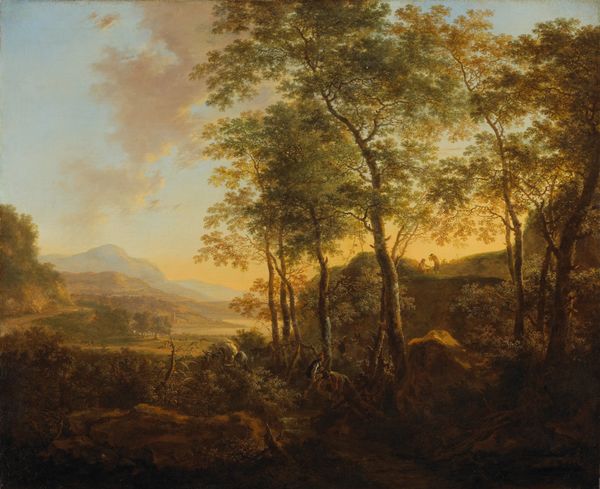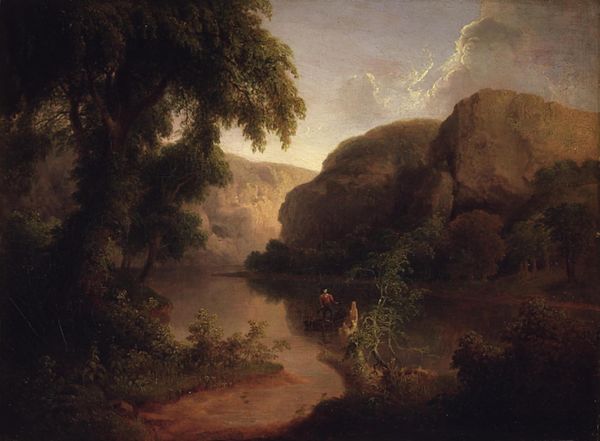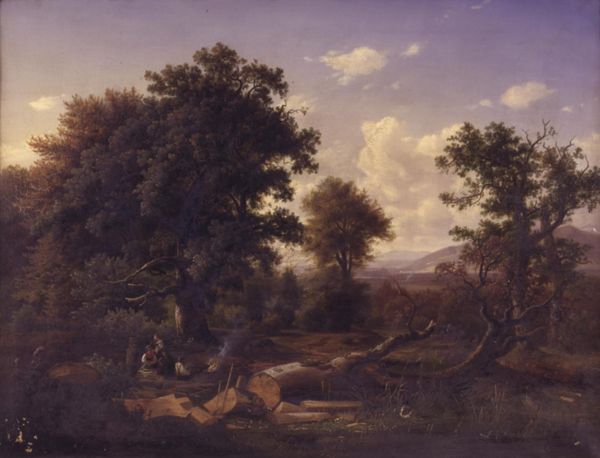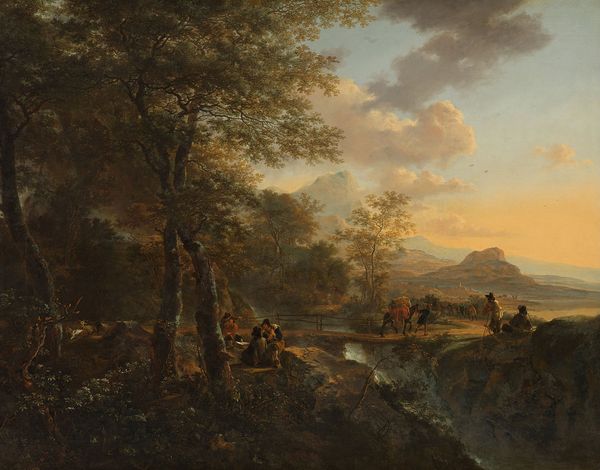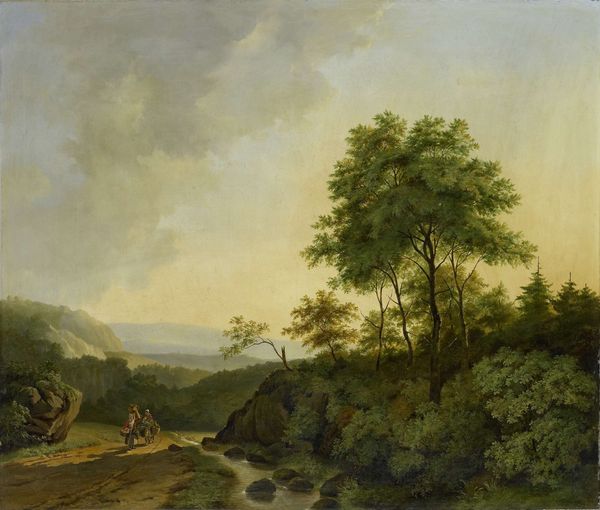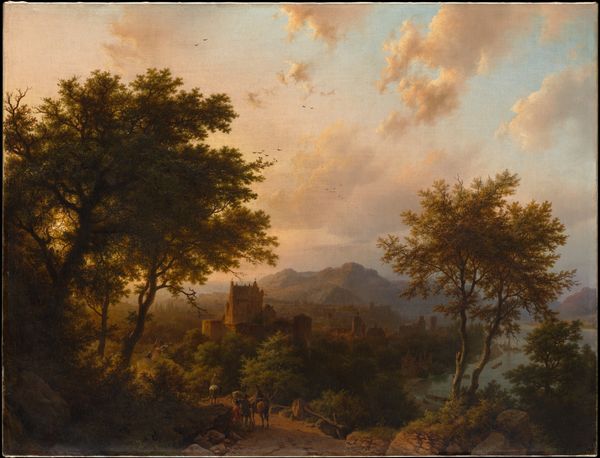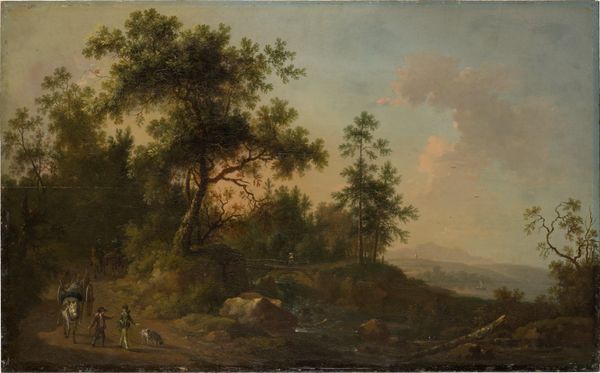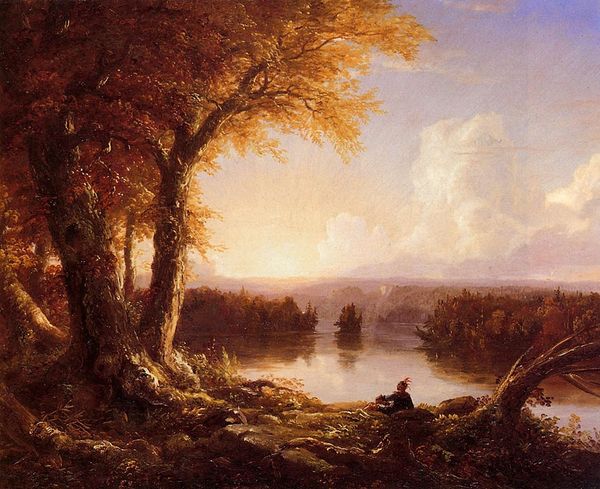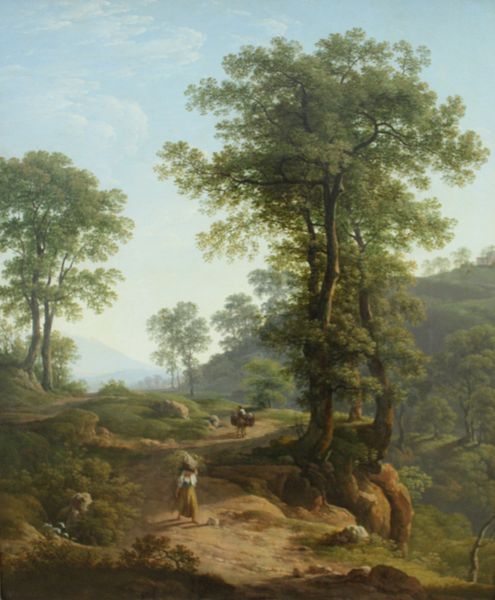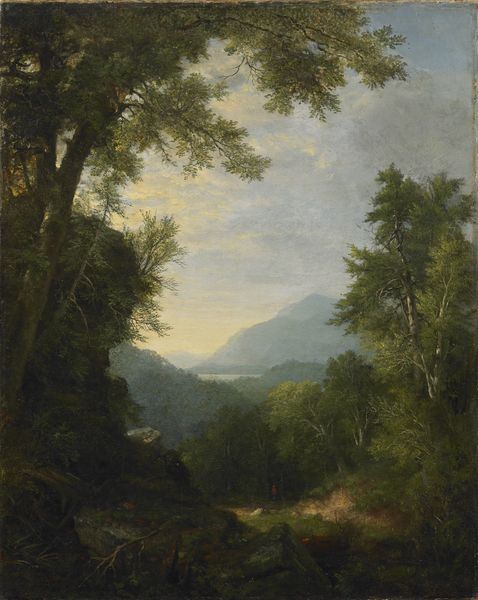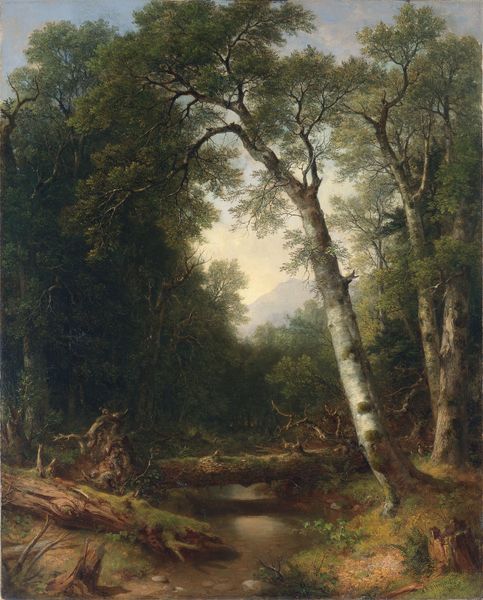
painting, oil-paint
#
portrait
#
tree
#
sky
#
painting
#
impressionism
#
oil-paint
#
landscape
#
romanticism
#
cloud
#
hudson-river-school
Copyright: Public domain
Editor: This is "The Indian's Vespers", an oil painting attributed to Asher Brown Durand. It presents a scene dominated by a magnificent tree, beneath a dramatic sky at dusk. The light reflecting on the water is mesmerizing, almost otherworldly. How do you read this piece? Curator: Immediately, one observes the meticulous attention to the structure of the composition. Note how Durand employs the trees not merely as objects within the landscape, but as framing devices, literally constructing the viewer’s gaze towards the atmospheric perspective. The textures, too, are crucial. How does the rough impasto of the foreground contrast with the smooth, almost glazed surface of the sky and water? Editor: That's interesting; the texture creates such a difference between the foreground and background. Curator: Indeed. Furthermore, the artist establishes a clear dialogue between light and shadow. Where does light originate, and how does its diffusion construct not just depth, but also meaning? It bathes the distant horizon. Editor: So, light creates space, depth, and highlights texture to direct your attention. Curator: Precisely. And consider the formal relationships at play, too: verticality versus horizontality; organic form against geometric suggestion. One must ask oneself: to what extent does Durand manage to synthesize observation with conceptual construction here? Editor: Thank you for highlighting those specific visual relationships; that changes my understanding of this piece. Curator: These elements offer rich interpretive possibilities within this visual structure. It becomes evident upon close examination that art provides enduring inquiry.
Comments
No comments
Be the first to comment and join the conversation on the ultimate creative platform.
